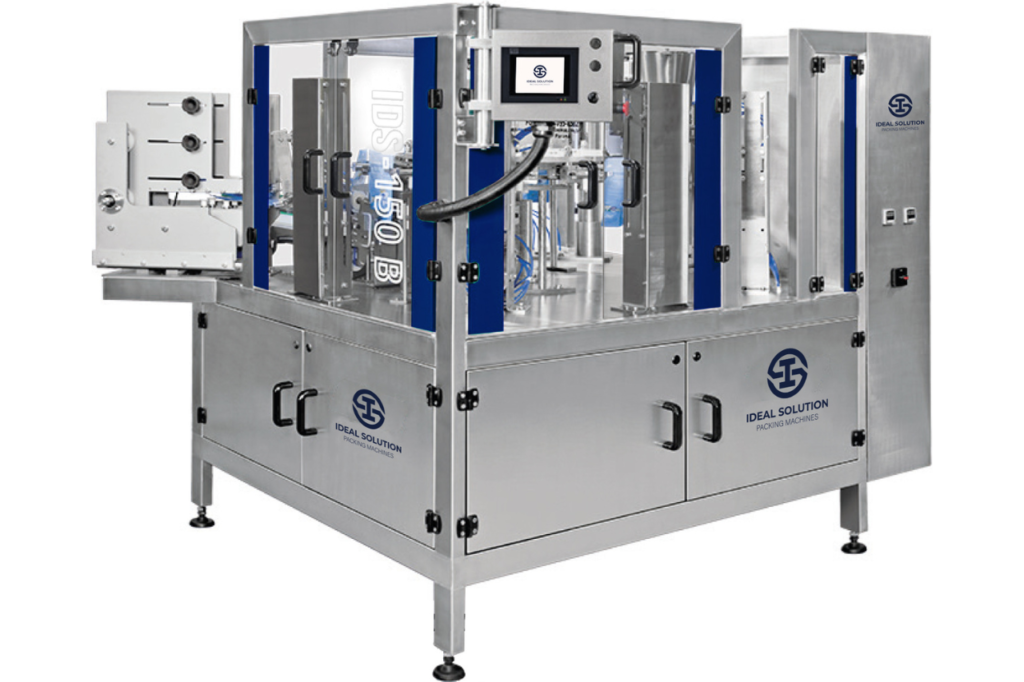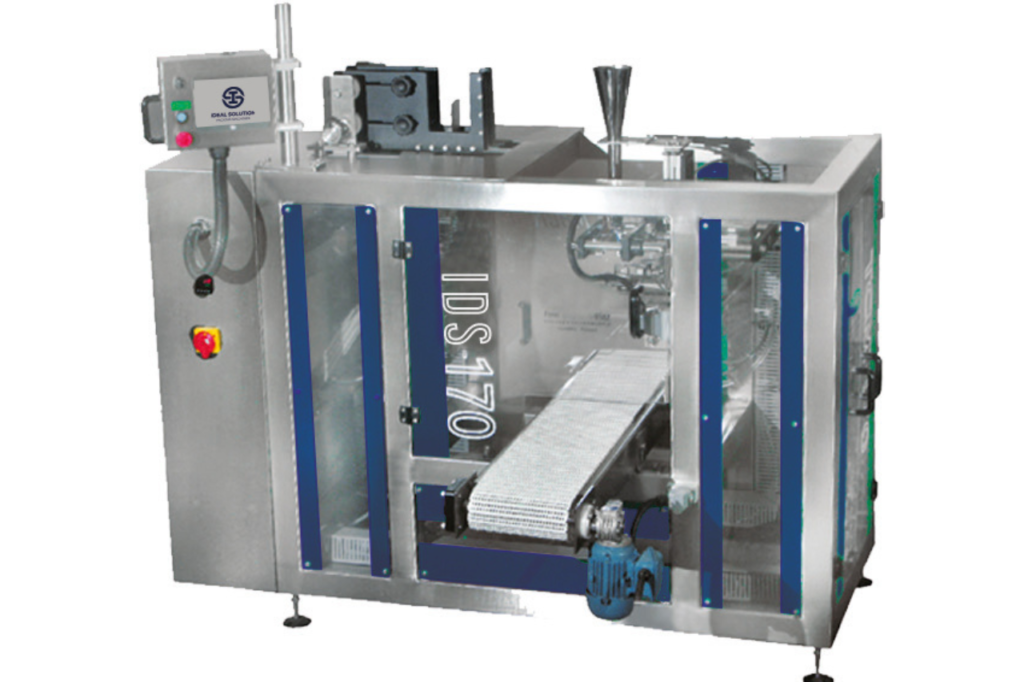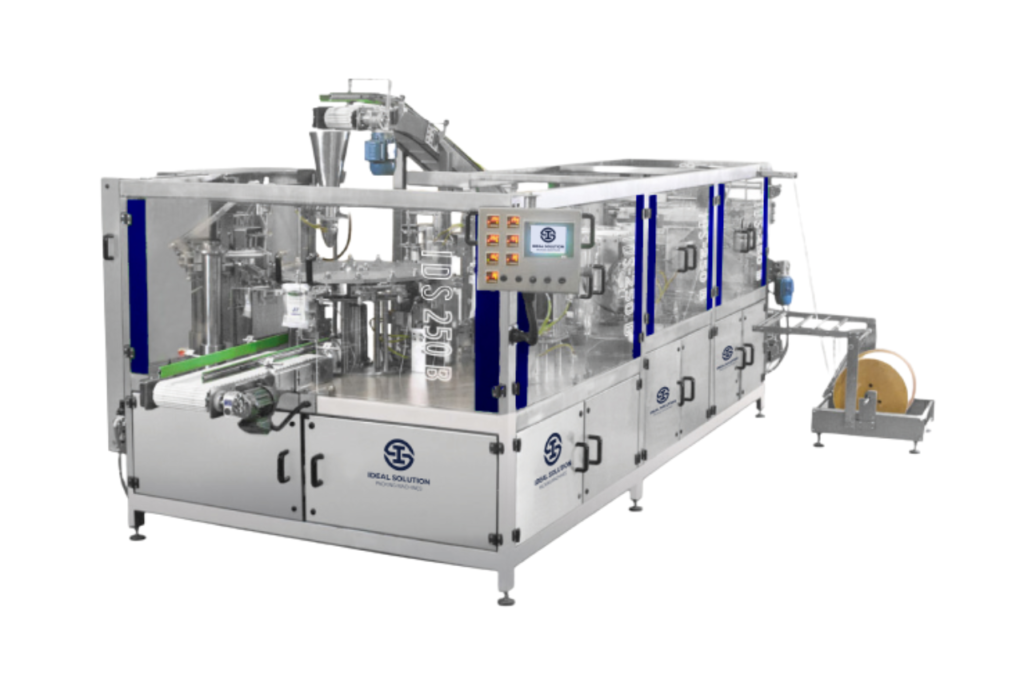Doypack (Standup pouch)
Doypack or stand-up pouch packaging machines are equipment used in various industries to produce flexible rectangular-shaped bags with a reinforced base that allows the packaging to stand upright. Doypacks are widely used for packaging products such as food, beverages, chemicals, personal care products, and more. These machines automate the process of forming, filling, and sealing doypacks, providing an efficient and consistent method of packaging.
Here are the key components and steps involved in the doypack packaging process:
Unwinding of Film: A roll of packaging film is loaded into the machine. This film is typically a multi-layer structure that provides suitable protection, barrier properties, and sealing characteristics.
Doypack Formation: The film is unwound and shaped into a tube. The bottom of the tube is folded and sealed to create the reinforced base of the doypack, allowing it to stand upright.
Product Filling: The formed doypack is then filled with the product to be packaged. This can include granular, liquid, paste, or powder products.
Sealing: After filling, the top of the doypack is sealed. This is often done using heat to melt the film layers and create an airtight seal.
Cutting: After sealing, the individual doypack is cut from the continuous strip of packaging.
Code Printing and Inspection: Como nas máquinas de embalagem stick pack, algumas máquinas de doypack também possuem impressoras para adicionar informações como datas de validade, códigos de lote, etc. Além disso, sistemas de inspeção podem verificar a qualidade da selagem e a integridade do doypack.
Code Printing and Inspection: Similar to stick pack packaging machines, some doypack machines also have printers to add information such as expiration dates, batch codes, etc. Additionally, inspection systems can check the quality of sealing and the integrity of the doypack.
Doypack packaging machines can vary in terms of production speed, level of automation, and additional features such as accurate filling systems and easy-open mechanisms. The choice of the right machine depends on the specific product requirements, desired production rate, available space, and budget.





